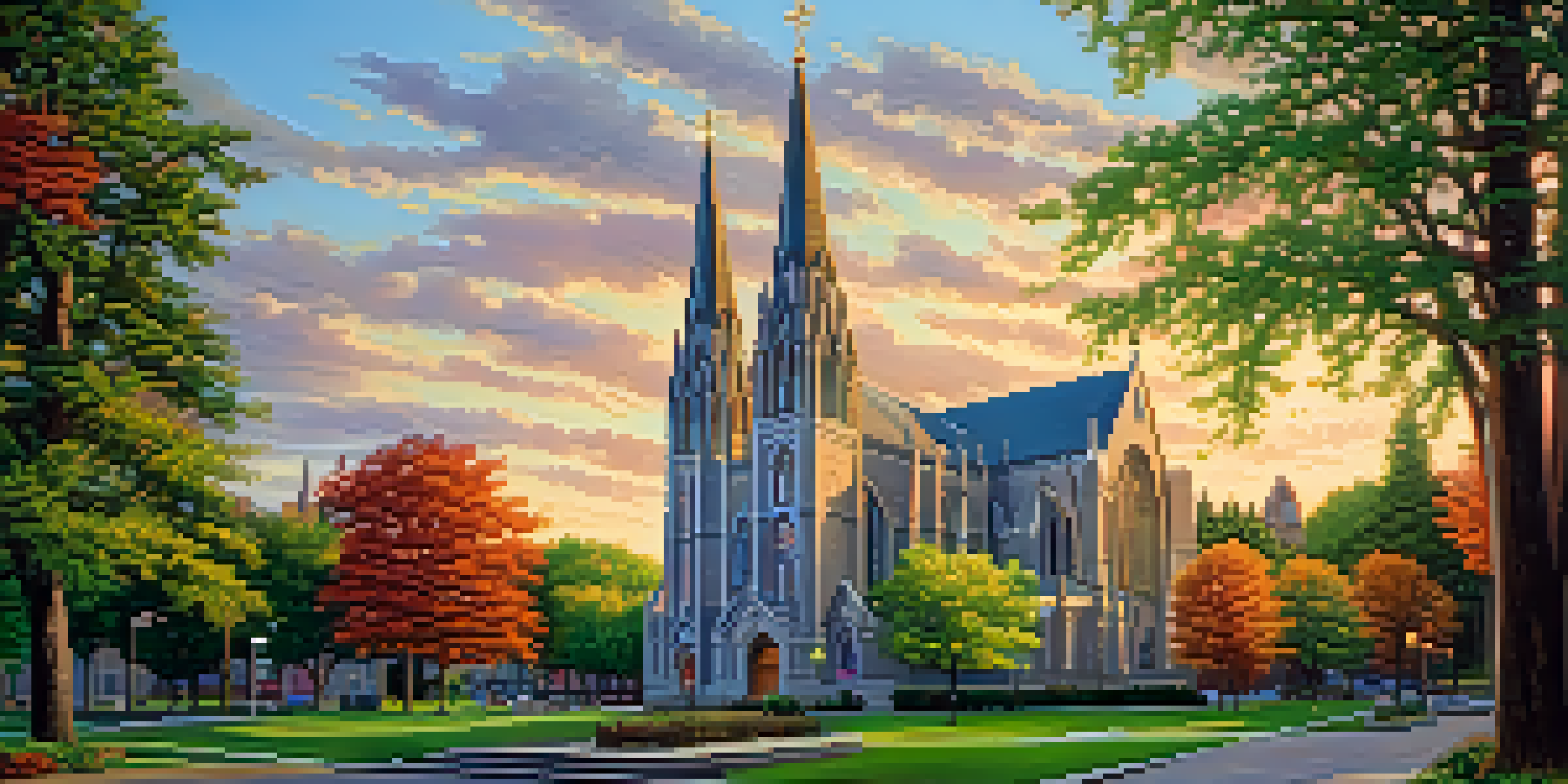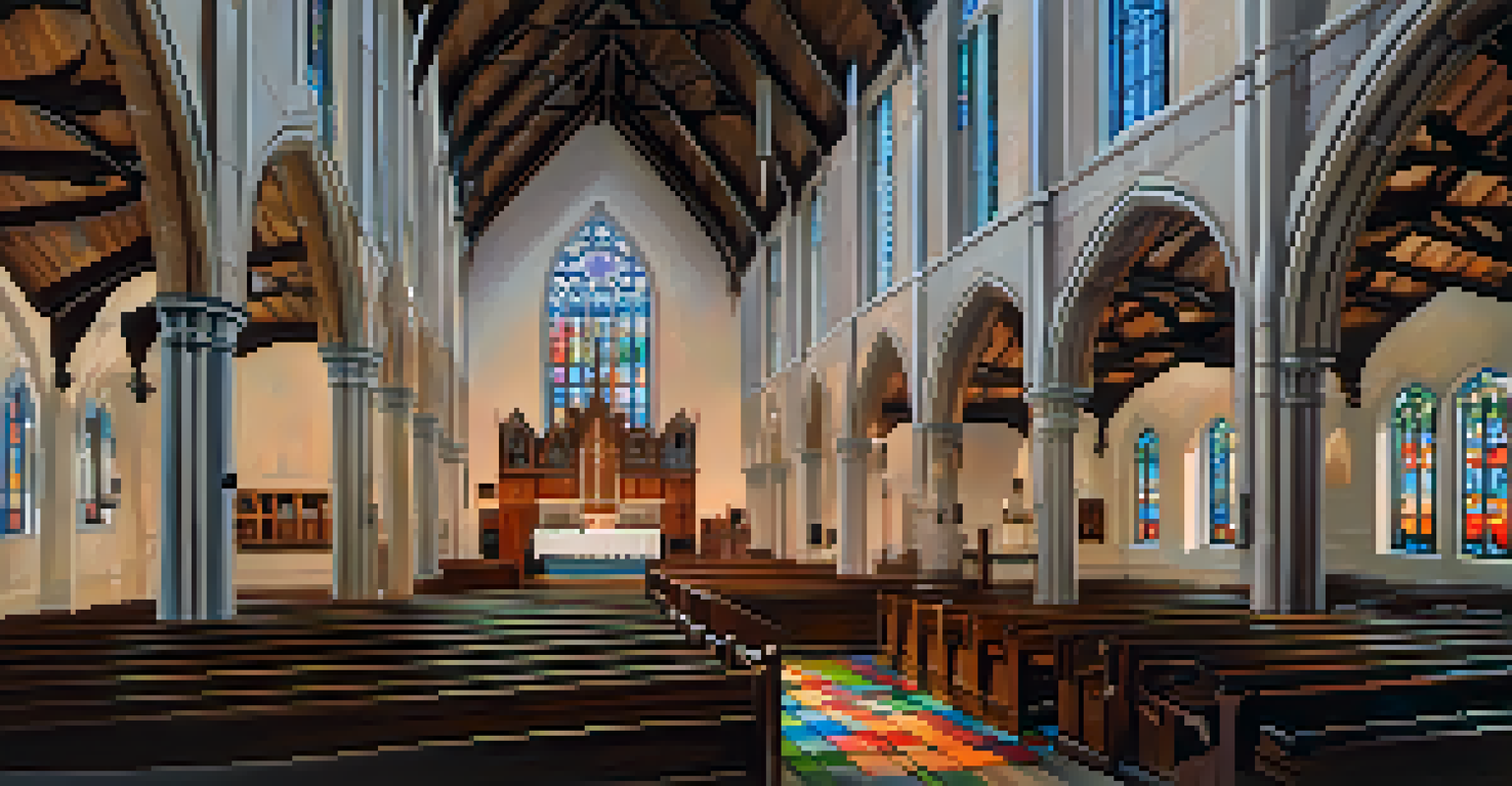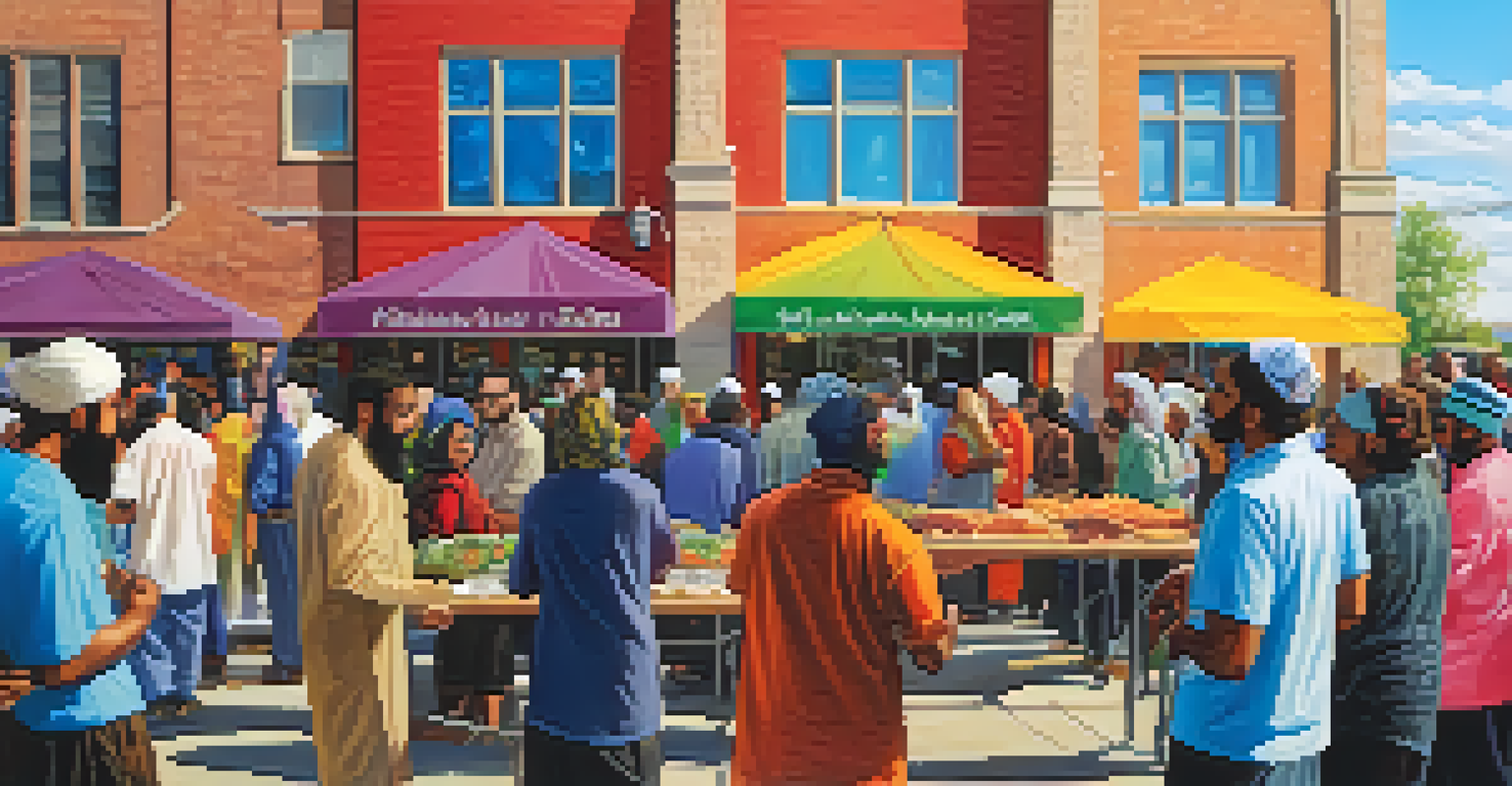The Role of Faith in Buffalo's Historic Churches Development

The Historical Context of Buffalo's Churches
Buffalo, New York, has a rich tapestry of history that intertwines deeply with its churches. Established in the early 19th century, these sacred spaces were not just places of worship; they were community hubs. As immigrants flocked to Buffalo, they brought their diverse faiths, influencing the architectural styles and congregational life. This blending of cultures laid the groundwork for many of the historic churches we admire today.
Churches are not buildings; they are living organisms, reflecting the life of the community.
For instance, St. Joseph's Cathedral, completed in 1865, showcases the Gothic Revival style, reflecting the Catholic Church's prominence during that period. Similarly, many Protestant denominations erected churches that resonated with their European roots, such as the German Evangelical Church. Each structure tells a story of faith and community resilience amid social and economic changes.
Understanding this context is crucial, as it highlights how faith was a unifying force in Buffalo’s early days, contributing to the development of neighborhoods and community identities. These churches not only served spiritual needs but also offered social services, education, and support during challenging times.
Architectural Significance of Buffalo's Churches
The architectural beauty of Buffalo's historic churches is a testament to the faith and dedication of their congregations. Many of these churches feature intricate designs, stained glass windows, and towering spires that inspire awe. For example, the majestic First Presbyterian Church, completed in 1891, is known for its stunning Romanesque Revival architecture, drawing visitors and worshippers alike.

These structures often reflect the cultural backgrounds of the congregations that built them. The diversity in design—from the simple, functional structures of early settlers to the ornate cathedrals of later years—mirrors the evolving faith landscape of Buffalo. Each church stands as a monument to the era in which it was built, showcasing the artistic expression of the time.
Buffalo's Churches: Community Hubs
Historic churches in Buffalo served as vital community centers, providing support and fostering connections among diverse immigrant populations.
Moreover, the preservation of these architectural gems is vital for maintaining Buffalo's historical character. They serve as reminders of the city's past, while also acting as active places of worship and community gathering, proving that faith and architecture are deeply intertwined.
Faith as a Catalyst for Community Building
Faith has always acted as a driving force in building strong communities in Buffalo. Churches have provided a sense of belonging, offering support systems for individuals and families. From hosting social events to providing food pantries, these institutions have been pivotal in addressing local needs and fostering connections.
The church is the only institution that exists primarily for the benefit of those who are not its members.
Throughout history, many churches in Buffalo have stepped up during crises, such as economic downturns or natural disasters, showing how faith translates into action. For example, during the Great Depression, local churches organized relief efforts, helping countless families survive tough times. This illustrates how faith goes beyond spiritual matters; it actively shapes social dynamics.
The sense of community fostered in these churches often leads to volunteerism and activism, with congregations mobilizing for various causes. This interplay of faith and community engagement highlights the essential role churches play not just in spiritual life but in nurturing civic responsibility.
Diversity of Faith Represented in Buffalo's Churches
Buffalo's historic churches represent a mosaic of faith traditions that enrich the city's cultural landscape. From Catholic and Protestant denominations to Jewish synagogues and Islamic centers, this diversity is a reflection of the city's immigrant roots. Each faith community brings its own rituals, practices, and celebrations, contributing to a vibrant spiritual tapestry.
For instance, the Islamic Society of Buffalo, established in the 1980s, underscores the recent waves of immigration and the evolving religious landscape. Similarly, the presence of historic African American churches highlights their significant role in advocating for civil rights and social justice. These diverse faiths not only coexist but often collaborate for community betterment.
Architectural Treasures of Faith
The distinct architectural styles of Buffalo's churches reflect the rich cultural heritage and evolving faith traditions within the city.
This interfaith dialogue enhances understanding and respect among different cultures, promoting harmony in a city known for its rich history. Such collaboration exemplifies how faith serves as a bridge, connecting people from various backgrounds in pursuit of common goals.
Challenges Facing Historic Churches Today
Despite their historical significance, many churches in Buffalo face challenges that threaten their survival. Aging infrastructure, dwindling congregations, and financial constraints are common issues that require urgent attention. As society evolves, the traditional role of churches is being redefined, leading to difficult decisions about their futures.
Some churches have creatively adapted by repurposing their spaces for community events, art exhibitions, or nonprofit services, ensuring that they remain relevant. This adaptive reuse allows them to continue serving the community while preserving their historical essence. However, such changes can also create tension within congregations that feel a strong attachment to traditional practices.
Community support is crucial in addressing these challenges. Initiatives to raise funds for repairs, increase awareness of their historical value, and engage younger generations can help breathe new life into these cherished institutions. By rallying together, local communities can ensure that these historic churches continue to play a vital role in Buffalo's spiritual and cultural landscape.
The Role of Faith in Preservation Efforts
Faith communities play a significant role in preserving Buffalo's historic churches. Many congregations see themselves as stewards of these sacred spaces, understanding their importance not only for worship but as cultural landmarks. This sense of responsibility often leads to fundraising efforts and community initiatives aimed at maintaining these structures.
For example, preservation groups have emerged, partnering with churches to secure grants and engage volunteers for restoration projects. The collaboration between faith communities and preservationists highlights how faith can motivate people to take action, ensuring these buildings are not lost to time. This partnership can also foster a sense of pride in the community, as locals rally around a shared heritage.
Challenges and Future of Churches
Many historic churches face significant challenges today, but community engagement and adaptive reuse can help preserve their legacy for future generations.
Additionally, educational programs and events hosted by these churches often focus on their history and architectural significance. By engaging the public and sharing stories, these institutions can inspire a new generation to appreciate and protect Buffalo's rich religious heritage.
Looking Ahead: The Future of Faith in Buffalo's Churches
As Buffalo continues to evolve, the future of its historic churches will depend on their ability to adapt while maintaining their core values. Engaging younger generations through innovative programs and outreach can help sustain these institutions in the long run. By incorporating modern technology and social media, churches can create more inclusive environments that resonate with today’s youth.
Moreover, fostering interfaith dialogue and collaboration can strengthen the bonds among different religious communities. Working together on social issues can enhance visibility and relevance, showcasing how faith can unite people across diverse backgrounds. This approach not only preserves the legacy of these churches but also reinforces their role as vital community resources.

Ultimately, the future of faith in Buffalo's historic churches is bright, provided that communities actively participate in their preservation and evolution. By embracing change while honoring tradition, these institutions can continue to be beacons of hope and connection for generations to come.